School Highlights
Wright Career College served 1,391 students (100% of students were full-time).
The college's student:teacher ratio of 17:1 was higher than the state community college average of 16:1.
Minority enrollment was 63% of the student body (majority Black), which was more than the state average of 40%.
School Overview
Wright Career College
(KS) Community College Avg.
Carnegie Classification
Item not available
Associate's Colleges: Mixed Transfer/Career & Technical-High Nontraditional
Institution Level
Less than 2 yrs
At least 2 but less than 4 years
Institution Control
Private, non-profit
Public
Total Faculty
82 staff
170 staff
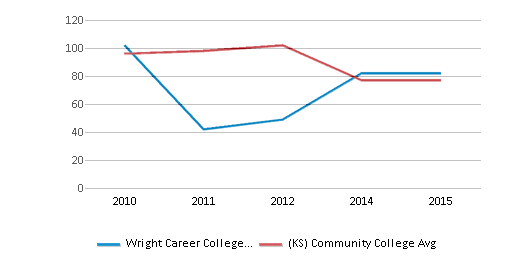
Student Body
Total Enrollment
1,391 students
1,908 students
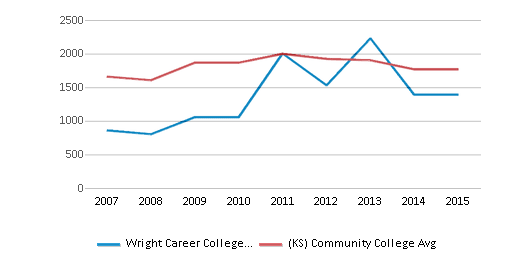
Student : Teacher Ratio
17:1
16:1
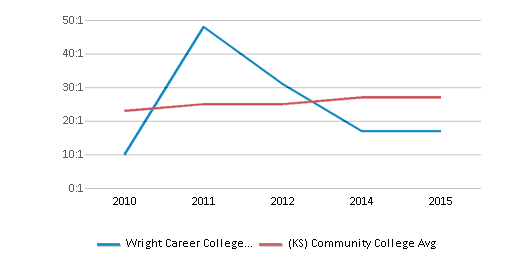
# Full-Time Students
1,391 students
606 students
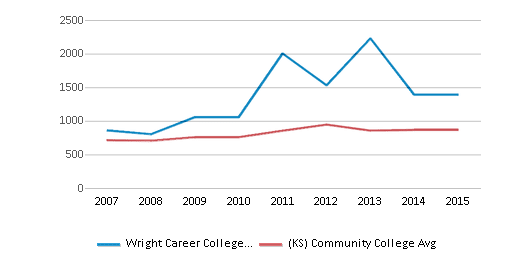
# Part-Time Students
n/a
1,451 students
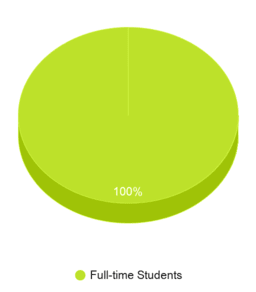
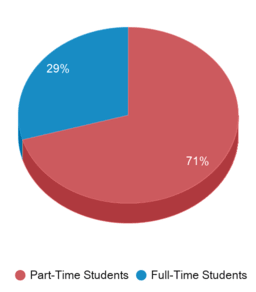
# Enrollment Undergraduate
341 students
231 students
# Full-Time Undergraduate Students
1,391 students
606 students
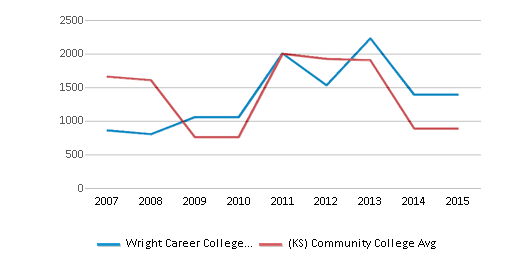
# Full-Time Graduate Students
n/a
11 students
# Part-Time Undergraduate Students
n/a
1,424 students
# Part-Time Graduate Students
n/a
5 students
Total Dormitory Capacity
n/a
342 students
% American Indian/Alaskan
4%
1%
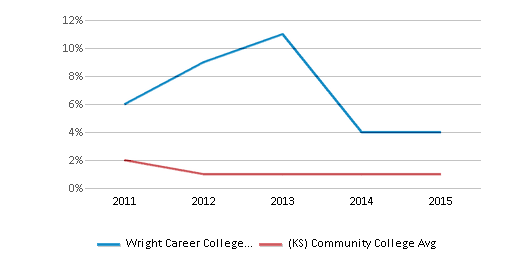
% Asian
n/a
3%
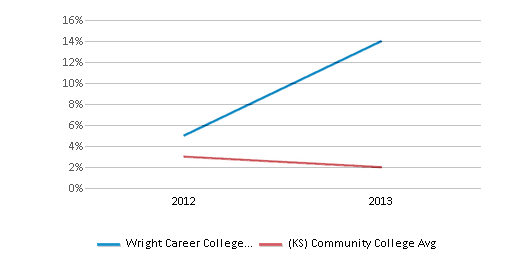
% Hispanic
10%
15%
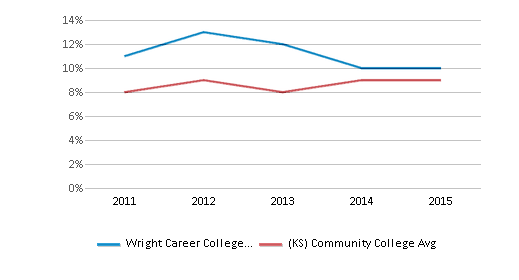
% Black
47%
8%

% White
37%
60%
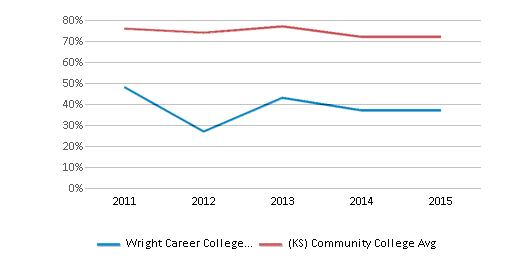
% Hawaiian
n/a
1%
% Two or more races
1%
4%

% Non Resident races
n/a
2%
% Unknown races
n/a
6%
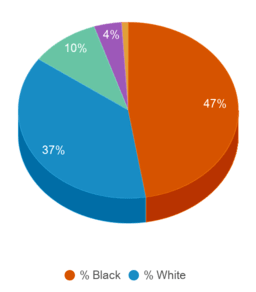
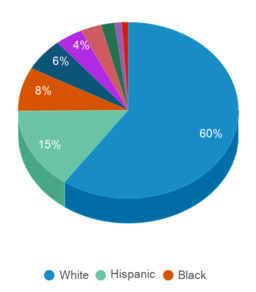
Diversity Score
0.63
0.60
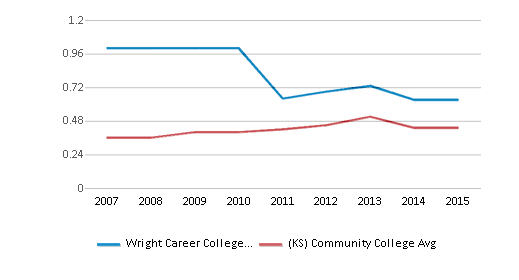
College Completion Rate (Students who graduate in less than 4 years)
63%
33%
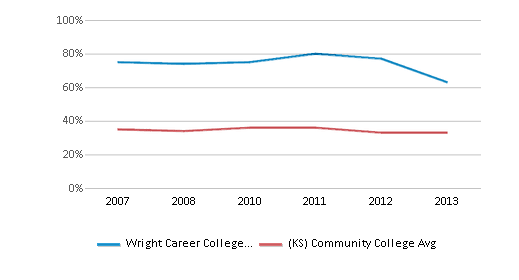
College Completion Rate (Students who graduate in 4 years or more than 4 years)
n/a
0.3056%
Average Graduate Earnings (10 Years)
$19,600
$34,000
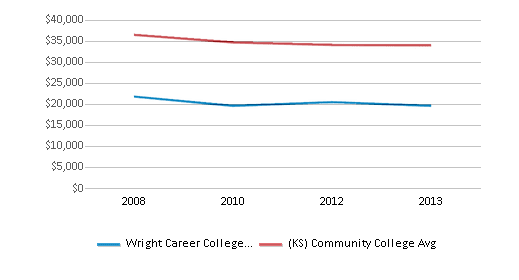
Tuition and Acceptance Rate
Private State Tuition Fees
$12,400
$18,155
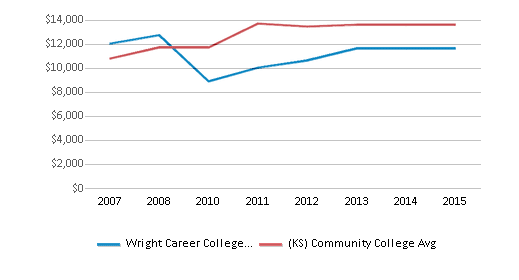
% Students Receiving Some Financial Aid
97%
90%
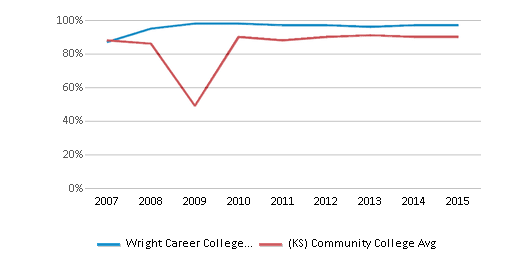
Median Debt for Graduates
$25,250
$9,451
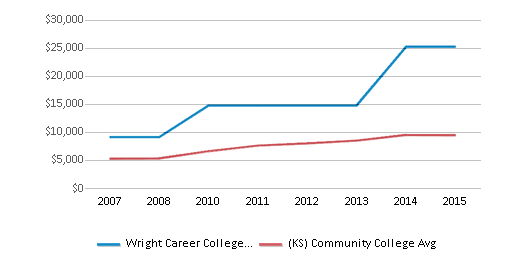
Median Debt for Dropouts
$9,434
$5,250

Acceptance Rate
n/a
100%
ACT Composite
n/a
21
Source: 2015 (or latest year available) Integrated Postsecondary Education Data System (IPEDS)
Frequently Asked Questions
How much does Wright Career College cost?
Wright Career College's private state tuition is approximately $12,400.
Recent Articles

Obtaining Your Bachelor's Degree at a Community College
Explore the evolving landscape of community colleges offering bachelor's degrees, addressing affordability, accessibility, and workforce needs.

A to Z of Community College Certificates and Courses
From business and healthcare to technology and skilled trades, the article showcases the breadth of options available to students seeking to enhance their knowledge, develop new skills, or pursue career advancement.

What is a Community College?
This comprehensive guide explains what a community college is, its history, and its role in higher education. It covers the types of programs offered, differences from four-year colleges, benefits of attending, and important considerations for prospective students, providing valuable insights for those exploring educational options.






